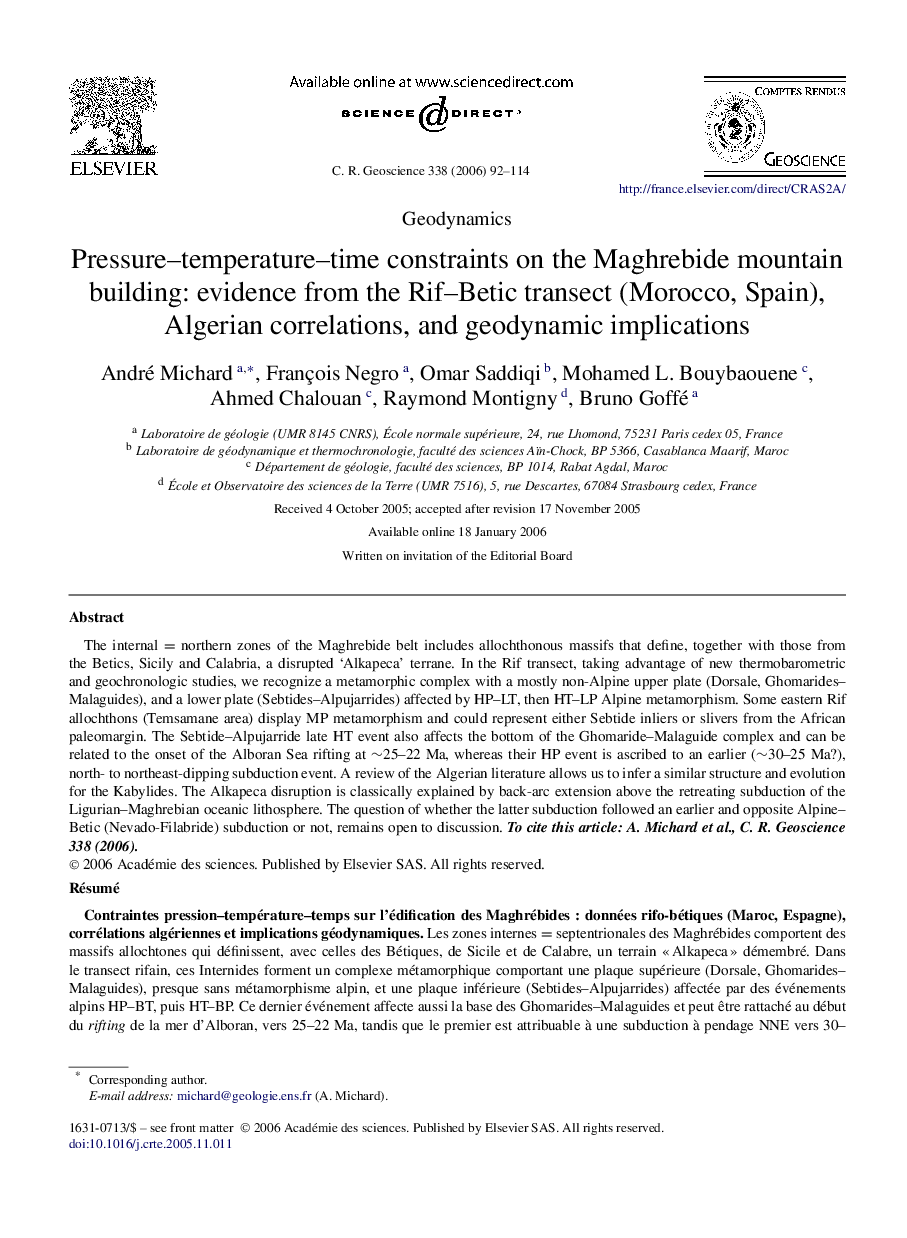| Article ID | Journal | Published Year | Pages | File Type |
|---|---|---|---|---|
| 4462978 | Comptes Rendus Geoscience | 2006 | 23 Pages |
The internal = northern zones of the Maghrebide belt includes allochthonous massifs that define, together with those from the Betics, Sicily and Calabria, a disrupted ‘Alkapeca’ terrane. In the Rif transect, taking advantage of new thermobarometric and geochronologic studies, we recognize a metamorphic complex with a mostly non-Alpine upper plate (Dorsale, Ghomarides–Malaguides), and a lower plate (Sebtides–Alpujarrides) affected by HP–LT, then HT–LP Alpine metamorphism. Some eastern Rif allochthons (Temsamane area) display MP metamorphism and could represent either Sebtide inliers or slivers from the African paleomargin. The Sebtide–Alpujarride late HT event also affects the bottom of the Ghomaride–Malaguide complex and can be related to the onset of the Alboran Sea rifting at ∼25–22 Ma∼25–22 Ma, whereas their HP event is ascribed to an earlier (∼30–25 Ma∼30–25 Ma?), north- to northeast-dipping subduction event. A review of the Algerian literature allows us to infer a similar structure and evolution for the Kabylides. The Alkapeca disruption is classically explained by back-arc extension above the retreating subduction of the Ligurian–Maghrebian oceanic lithosphere. The question of whether the latter subduction followed an earlier and opposite Alpine–Betic (Nevado-Filabride) subduction or not, remains open to discussion. To cite this article: A. Michard et al., C. R. Geoscience 338 (2006).
RésuméLes zones internes = septentrionales des Maghrébides comportent des massifs allochtones qui définissent, avec celles des Bétiques, de Sicile et de Calabre, un terrain « Alkapeca » démembré. Dans le transect rifain, ces Internides forment un complexe métamorphique comportant une plaque supérieure (Dorsale, Ghomarides–Malaguides), presque sans métamorphisme alpin, et une plaque inférieure (Sebtides–Alpujarrides) affectée par des événements alpins HP–BT, puis HT–BP. Ce dernier événement affecte aussi la base des Ghomarides–Malaguides et peut être rattaché au début du rifting de la mer d'Alboran, vers 25–22 Ma, tandis que le premier est attribuable à une subduction à pendage NNE vers 30–25 Ma (?). Une revue de la littérature algérienne indique qu'une structure et une évolution comparables caractérisent les Kabylides. La fragmentation d'Alkapeca est classiquement expliquée par extension arrière-arc et le retrait de la subduction océanique liguro-maghrébine. L'éventualité d'une subduction alpine-bétique (Névado-Filabrides) antérieure et de sens opposé demeure une question ouverte à la discussion. Pour citer cet article : A. Michard et al., C. R. Geoscience 338 (2006).
